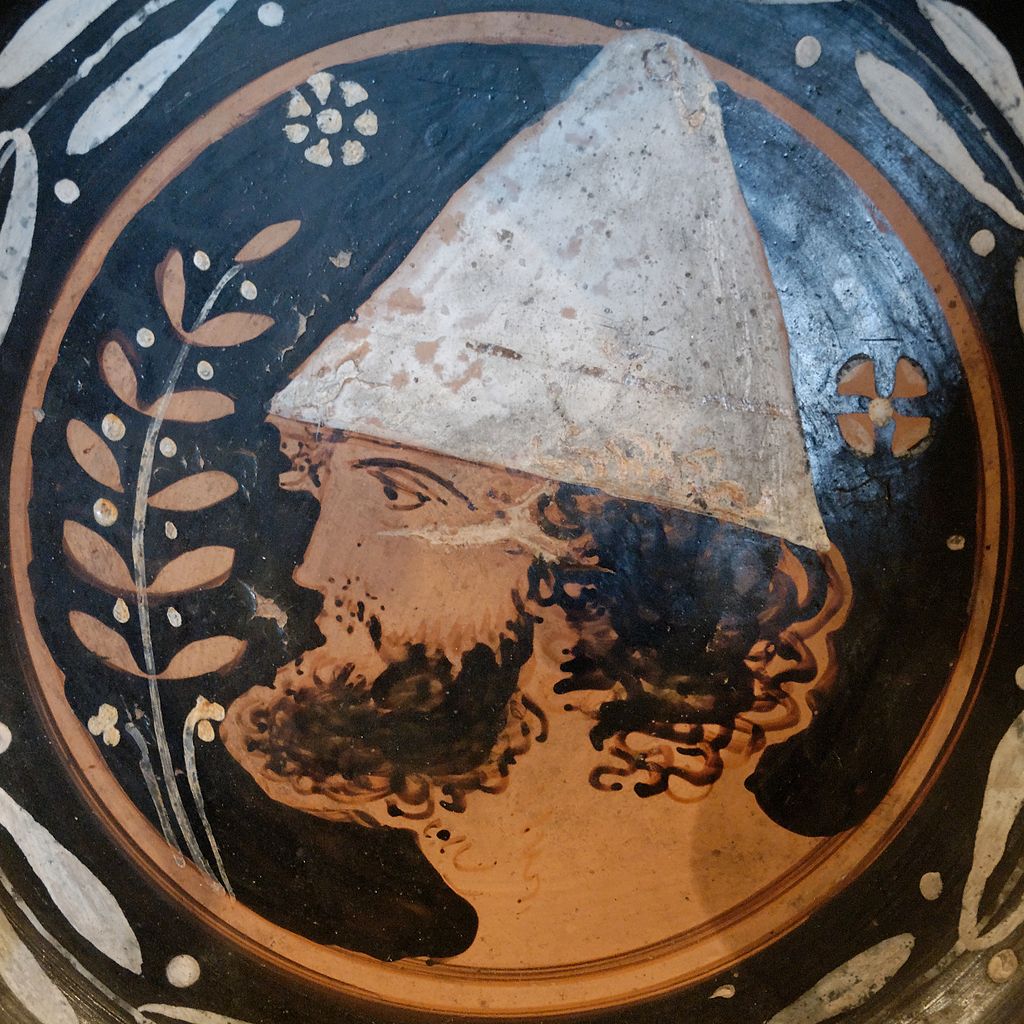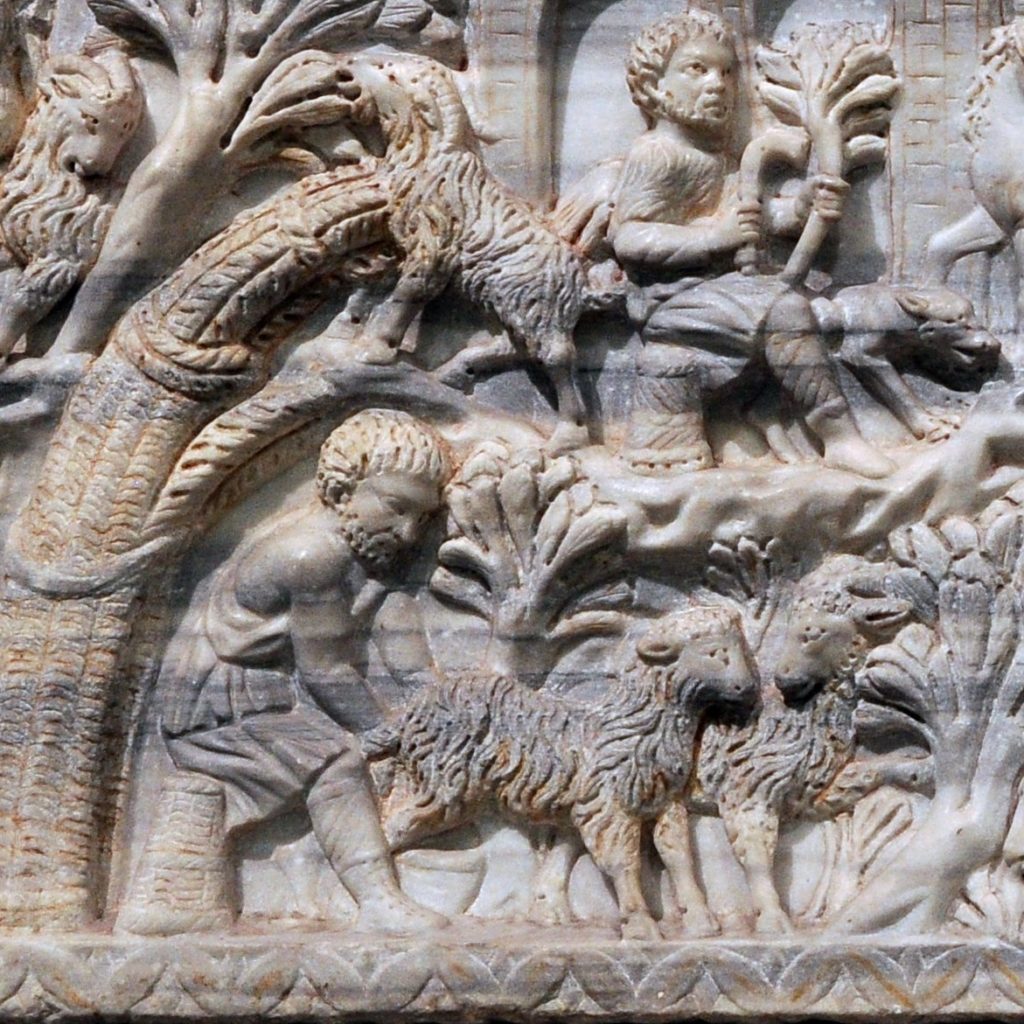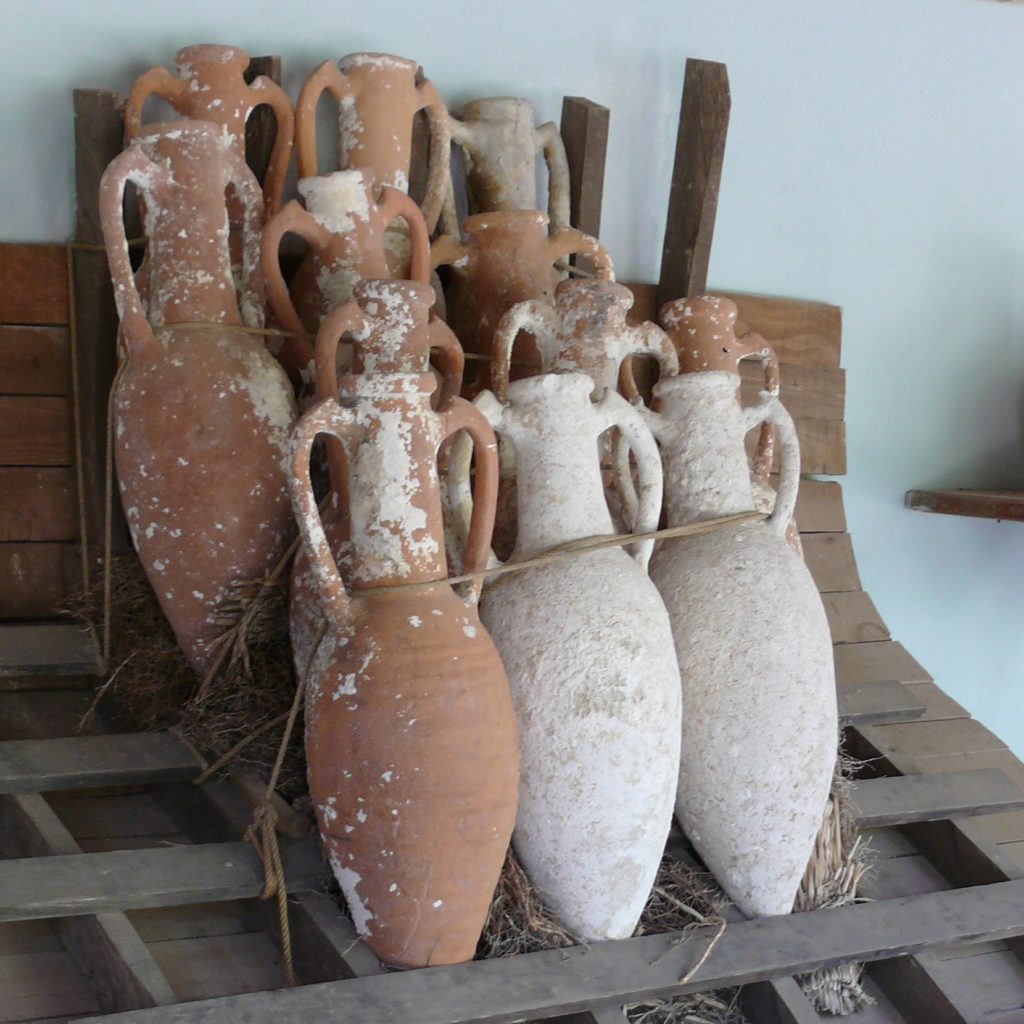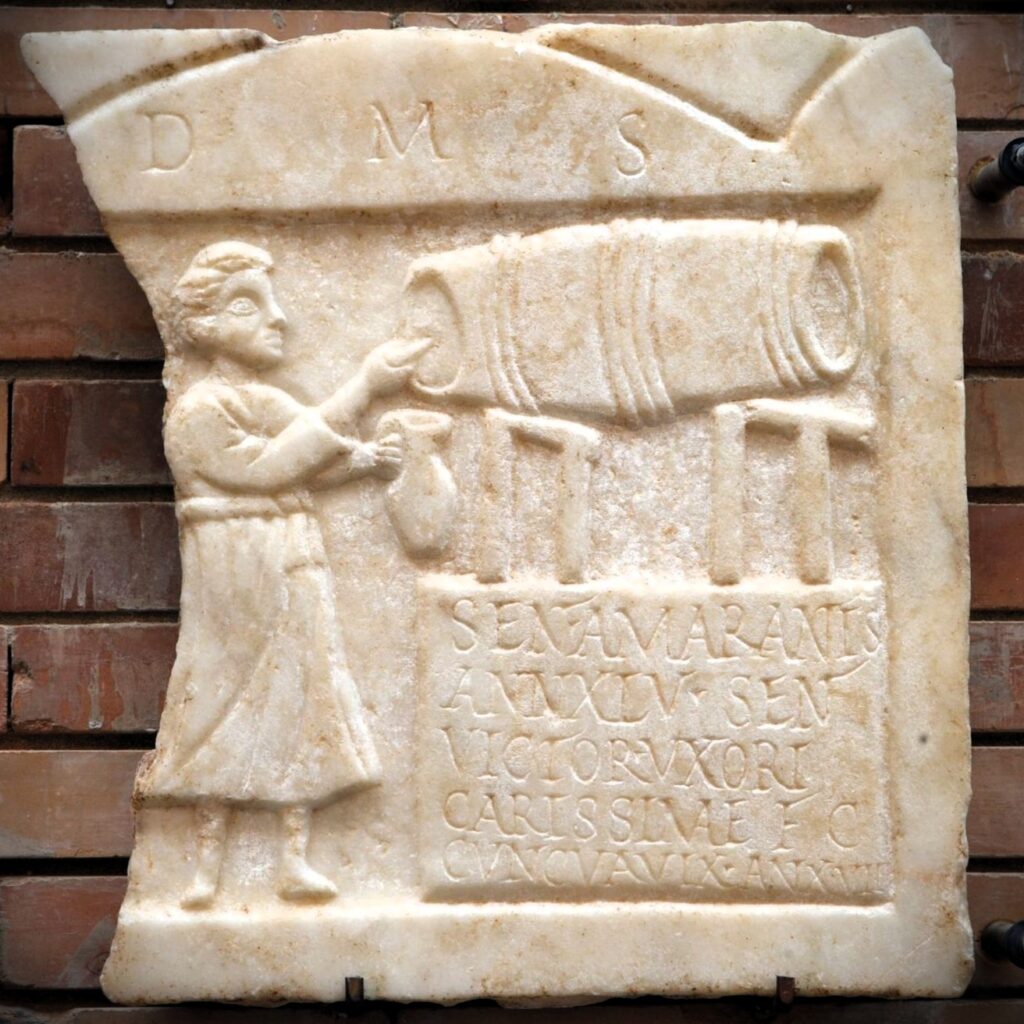Translated from french (please notify us of errors)
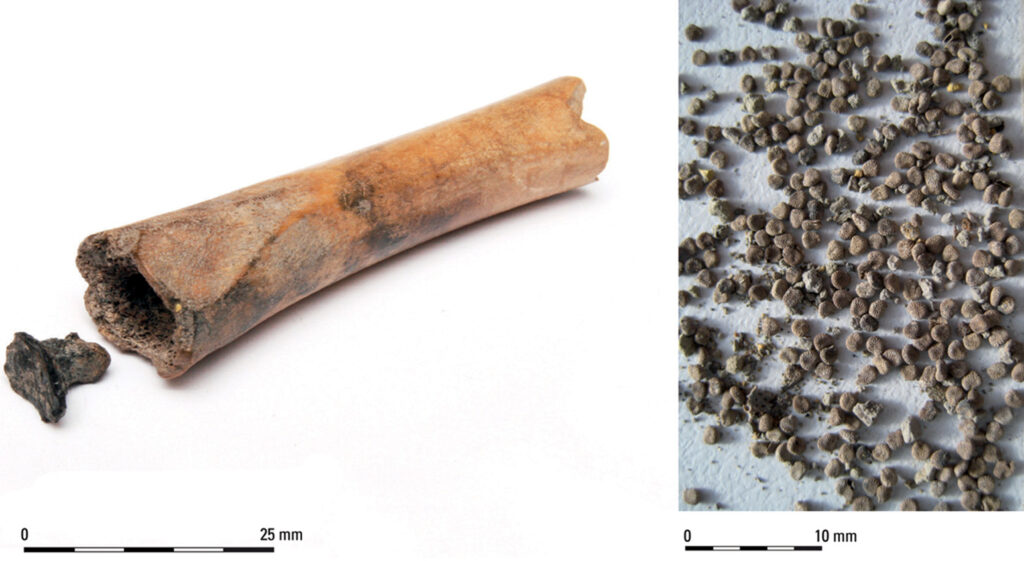
Discovery of a drug stash in the Netherlands! In 2017, archaeologists excavating the Roman site of Houten‑Castellum uncovered something unusual. In a well dating to the late 1st century CE, they found a sheep or goat femur carefully hollowed out to form a 72 mm‑long cylinder. Sealed with birch‑bark tar as a kind of pitch, inside were 382 seeds of black henbane – an extremely toxic plant in the Solanaceae family, akin to belladonna or mandrake.
Ancient physicians were well aware of this plant and its dangers. Dioscorides, a 1st‑century Greek physician, distinguishes three types of henbane.
The first “bears almost purple flowers, leaves like smilax, black seed, and hard, thorny fruits.” The second has “yellowish flowers, softer foliage and pods, and pale yellow seeds like those of iris.” These two types “cause madness and sleep, difficult to use.” “Useful for treatments and very mild is the third,” which is “greasy, tender and downy, with white flowers and white seed.” Dioscorides therefore recommends using the white type; however, if that isn’t available you may use the yellow, but reject the black as the worst. The seed‑prepared juice relieves pain, hot stinging discharges, earaches, and uterine ailments -but he warns that the leaves, when boiled and eaten in a bowlful, produce a mild mental disturbance.[1].
In his Natural History, Pliny the Elder names four varieties of henbane and cautions that “all produce madness and vertigo.”[2]. Nevertheless, he describes many medicinal uses: the juice may be applied to nerves[3], henbane soothes testicular swellings[4]. and a mixture of henbane with donkey milk helps relieve bloating and breathlessness[5].
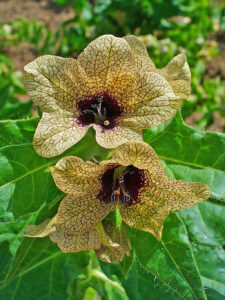
Pliny also expresses his personal reservations about the plant:
“In general, using this plant is, in my view, very dangerous. Indeed, even the leaves disturb the mind if more than four are consumed. (…) Oil is also made from the seed which, instilled into the ear, disturbs the intellect. Curiously, remedies have been provided for those who have drunk the juice as a poison, and paradoxically the juice itself is listed among remedies: thus poisons are endlessly experimented with and even forced into usefulness.”[6].
A deadly poison and a sought‑after remedy, such is the paradox.
Vessel or pipe?
Scholars are divided over the object found at Houten‑Castellum. The pipe hypothesis relies on the tar cap showing uneven charring and on Pliny’s mention that “the smoke of burned henbane” may relieve joint pain.[7].
However, several points undermine this interpretation: the seeds are not carbonised, their large number seems excessive for personal use, and pipes were extremely rare in Europe before tobacco arrived. The storage‑container hypothesis appears more plausible: the bone likely held up to a thousand seeds, sealed tightly with tar.
Mysterious offerings
The discovery context strongly suggests deliberate use of henbane. The bone filled with seeds was found alongside a partial cow skeleton and other unusual artefacts: millstone fragments, a dog skull, and a partial horse skeleton displaying butchery marks. Scholars interpret the deposit as an “abandonment offering,” a ritual marking the cessation of well use.
A second find on the same site reinforces this interpretation. In an enclosure ditch, archaeologists found an overturned basket, four cooking pots, and a complete black henbane inflorescence, dated to 90–110 CE. This too appears to be an abandonment offering.
The presence of henbane in two contemporary ritual deposits is unlikely coincidental. It indicates that the plant held particular significance for the inhabitants of Houten‑Castellum.
Medical or ritual use of black henbane was not unique to this locale. In Neuss (Germany), within a Roman fort hospital, 128 carbonised henbane seeds were discovered alongside other medicinal plants: fenugreek, vervain, centaury, St John’s wort, dill, and coriander.
Beyond the Empire’s borders
The use of black henbane extended both beyond the Roman Empire and beyond Roman times.
In the Fyrkat ring fortress in Denmark, around 980 CE, henbane seeds were found in a woman’s grave—likely in a leather pouch—accompanied by a metal wand and a box with small animal bones. She was probably a völva, a seer who used the seeds for hallucinogenic purposes.
Henbane seeds have also emerged from medieval hospitals in Scotland and Finland, demonstrating the continuity of its medical use.
The Houten‑Castellum bone thus illustrates the breadth of medical and ritual practices in Roman provinces. Far from major urban centres, the inhabitants of this Dutch farmstead mastered knowledge of a plant described centuries earlier in the medical treatises of Rome and Athens.
An age‑old drug
The use of henbane did not begin with the Romans. Sumerian clay tablets already mention henbane as a hallucinogen. The Ebers Papyrus, a medical scroll from Thebes circa 1600 BCE, also lists henbane among hundreds of medicinal drugs (including opium, senna, and castor oil).
Henbane was often combined with other plants—mandrake, belladonna, datura—in potions purported to be magical or anaesthetic. The Greeks knew its delirium‑causing properties well. Known as Herba Apollinaris, it was used by Apollo’s priestesses in divination rituals. At Delphi, the Pythia is said to have consumed a henbane‑infused mead before prophesying; she also inhaled its smoke.
In a Bronze Age Scandinavian burial, a beer flavoured with plants including honeysuckle and meadowsweet also contained black henbane, amplifying the intoxicating effects of the alcohol.
[1] Dioscorides, De Materia Medica 4.69: χρῆσθαι δεῖ τῷ λευκῷ· εἰ δὲ μὴ παρείη οὗτος, χρῆσθαι δεῖ τῷ ξανθῷ, τὸν δὲ μέλανα ἀποδοκιμάζειν ὡς χείριστον” et “ἑψηθέντα δὲ ὡς λάχανα καὶ βρωθέντα τρυβλίου πλῆθος μετρίαν παροκοπὴν ἐργάζεται.
[2] Pliny the Elder, Natural History, 25.17.35: omnia insaniam gignentia capitisque vertigines.
[3] Idem, 22.58.124: nervis cum hyoscyami suco inlinitur.
[4] Idem, 26.58.89: testium tumores sedat hyoscyamum.
[5] Idem, 20.73.193: similiter ad ventris aut intestinorum inflationes et orthopnoicis quod ternis digitis prenderet seminis, tantundem hyoscyami cum lacte asinino.
[6] Idem, 25.17.36-37: temeraria in totum, ut arbitror, medicina. quippe constat etiam foliis mentem corrumpi, si plura quam IIII bibant; etiam antiqui in vino, febrim depelli arbitrantes. oleum fit ex semine, ut diximus, quod ipsum auribus infusum temptat mentem, mireque, ut contra venenum, remedia prodidere iis, qui id bibissent, et ipsum pro remediis, adeo nullo omnia experiendi fine, ut cogant etiam venena prodesse.
[7] Idem, 26.15.27: nidor quoque accensi tussientibus.
Source
The article is based on the study by L. I. Kooistra, M. Groot, L. Kubiak-Martens, E. Langer et J. van Renswoude, Evidence of the intentional use of black henbane (Hyoscyamus niger) in the Roman Netherlands, Antiquity, Cambridge University Press, 2024.
Other articles in English from the Nunc est bibendum blog

